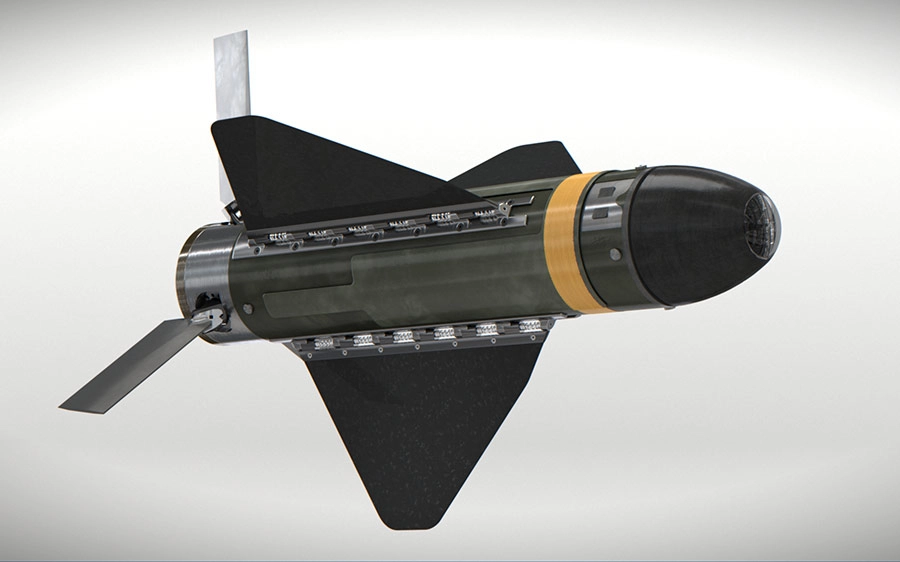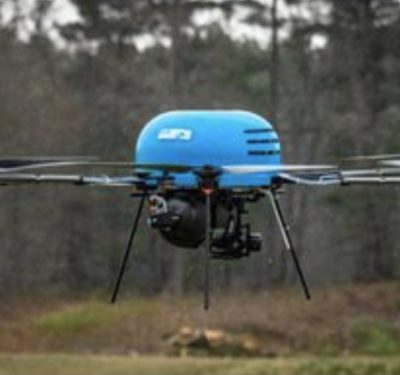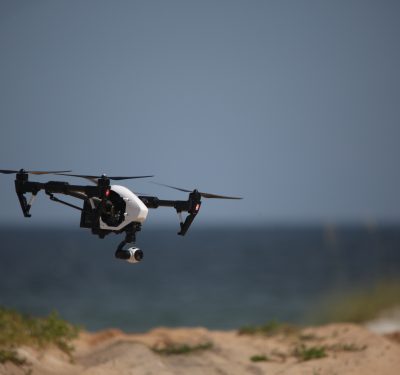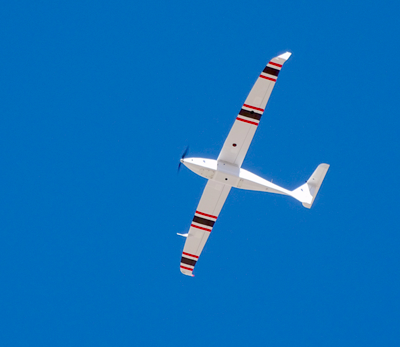Aerospace giant Northrop Grumman revealed on April 30 that it had quietly developed a new medium-range jet-powered one-way attack drone (OWA) called Lumberjack at a maritime defense expo in Washington DC.

As reported by TWZ, Northrop technology director Michael Bastin stated this Group 3 UAS with payload weight equivalent to the 250-lb.-class GBU-39 Small Diameter Bomb has a range of “several hundred miles”, or alternately, can loiter over the battlespace for two hours.
This single-use aircraft, which began testing in 2024 in conjunction with the Office of the Undersecretary of Defense for Research and Engineering, is capable of releasing multiple submunitions, or carrying non-kinetic electronic warfare payloads, and do all that at a fraction of the price of missiles/air-launched effects with similar reach. It reportedly operates fully autonomously, but also can be deployed for man-in-the-loop engagement leveraging its two-way datalink.
Furthermore, Bastin stated the UAV already supports launch via a field-deployable pneumatic ground-launch system (“…effectively a potato gun…”), or via electric rail mounted on a ship. An air-launched solution, which may be compatible with fast jets as well as slower aircraft, is also being developed to cater to government partners.
The model at the convention center had a short boxy fuselage, with two fold-out wings mounted on the upper fuselage, two smaller downwards canted fins at the engine exhaust, and a fixed sensor visible under the curved nose.
The claimed price of $75,000 to $100,000 “per effect” is especially interesting because U.S. loitering munitions have often been offered at prices many times more expensive than those deployed in combat by Ukraine, Iran and Russia.
For comparison, the piston-engine Shahed-136/Geran-2 Group 3 OWA drone is estimated to cost $20,000-$40,000 while its jet-powered spinoff, the Shahed-238, might come in around $80,000-$100,000 per unit (though allegedly hacked documents suggest the export price may be many times higher). Allowing for the ambiguity of the ‘per effect’ wording, it nonetheless seems Lumberjack could cost only a bit more than a jet-powered Shahed when carrying typical munitions.
Judging by its name, Lumberjack may be particularly designed to launch Northrop Grumman’s Hatchet mini-glide bombs with fold-out wings, which have also been integrated as a payload for Shield AI’s V-BAT drone. The six-pound Hatchet measures just over a foot long, and the company claims four can be carried on a Group 3 drone, or even two on a Group 2 UAV. A variety of guidance options (laser, GPS, and eventually optical seekers) and modular fuses enable precision against diverse point targets. Perhaps a single Lumberjack might be able to release enough Hatchets (or other submunitions) to individually engage, say, each vehicle in a tank platoon.
Tradeoffs: missiles compared to One-Way Attack drones
Both the massively destructive war in Ukraine, as well as U.S. Navy munition expenditures in the Red Sea, have highlighted how rapidly guided munitions stocks are likely to be expended in a high-intensity conflict. Accordingly, the Pentagon has kicked off numerous parallel programs seeking low-cost, fast-to-produce munitions to generate mass and sustainable inventory for future potential conflicts.
Drone-like munitions particularly offer much lower unit costs, higher production rates, and smaller logistical footprints than traditional standoff-range cruise or ballistic missiles. For the price of one quasi-ballistic Precision Strike Missile (300+ miles range), the Pentagon could procure 35 Lumberjacks at $100,000 each, if Northrop’s price estimates are accurate.
Undeniably, quantity has a quality all of its own. But there are tradeoffs: compared to subsonic cruise missiles traveling at airliner-speeds, traditional OWA drones flying at biplane-speeds can gives defenses extended early-warning times (buying time to move critical vehicles, evacuate personnel, scramble fighters, activate ground-based defenses etc.), are overall easier to intercept, and have less applicability against distant, time-sensitive targets.
However, ability to loiter fuel-efficiently enables novel modes of employment, whether as an orbiting reconnaissance or electronic warfare system, or for short-notice target queuing as threats pop up in a specific area. The jet-powered Lumberjack likely offers much greater speed than a piston-engine Shahed-136, even if it’s slower than a typical subsonic cruise missile.
Lumberjack’s potential as a naval land-attack system is especially interesting because currently the Navy only has a heavy, premium dedicated long-range land-attack capability on its surface warships in the form of turbojet-powered Tomahawk land-attack cruise missiles, which cost $2 million+ each, carry half-ton warheads, and can strike targets over 1,500 miles away. (Certain anti-ship/aircraft missiles at similar costs or higher can also be used for surface strikes.)
Those characteristics are necessary to safely execute certain missions, but there are also scenarios, such as the Red Sea conflict with Houthi rebels, where they’re overkill. Thus, ships (both destroyers as well as vessels traditionally without long-range land-attack capability) would benefit from having a cheaper, more numerous munition to strike smaller, dispersed surface targets, such as individual missile-launching trucks or small attack boats—for less than two million dollars per shot.
Northrop Grumman has also played up the ability of land-based Lumberjack teams to generate long-range precisions strikes from austere forward bases with minimal personnel/logistical demands—say, from remote Pacific islands.
Time will tell if Northrop Grumman can secure orders, but Lumberjack’s pricing for a munition in this range category is noteworthy given the challenges U.S. manufacturers face reducing costs in response to the drone warfare revolution of the 2020s driven by Ukraine, Iran and China.






